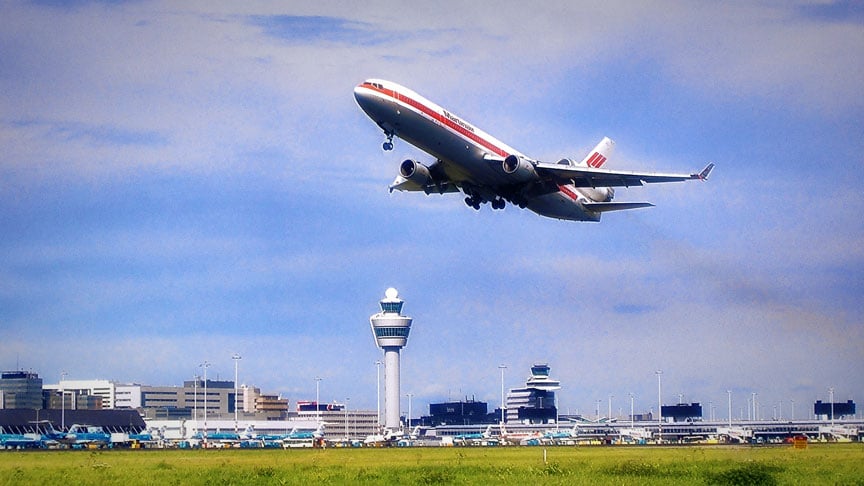This post was written by Nam Paik, vice president of sales at TSi Power.
Singapore’s Changi Airport is the 18th busiest in the world. In 2014, it served more than 40 million passengers and 1.8 million tons of air freight. Airport systems are critical nerve centers of the global economy, and it is important that they keep running, regardless of power outages or power disruptions.
Airports rely on backup power systems to keep crucial processes working smoothly. Typically, major airports are served by two or more independent alternating current (AC) grids and backed up by several very large emergency generators or uninterruptible power supplies (UPS). However, Changi Airport’s power is also protected by automatic transfer switches.

Thales Group, a French military and civilian aviation systems integrator, and ST Electronics, a large Singapore-based contractor and systems integrator, work closely with Changi Airport. Thales Group wanted to provide fail-safe and redundant AC power for Changi’s distributed control system cabinets, used for vital airport operations including baggage systems.
In 2008, Thales applied an automatic transfer switch, which is essentially a battery-less UPS system with two autonomous input AC sources, to protect Changi’s systems. The switches are highly energy efficient and reliable. The unit connects two protected power paths to the equipment, and it will switch in less than 8 milliseconds, which is fast enough to be invisible to the most sensitive loads.
Before the system integrators would install the automatic transfer switches, they required a lengthy evaluation to test the systems for performance and reliability. During 2008 and 2009, the systems integrators installed several units for a trial period. After 12 months, the units performed flawlessly. Based on test results, three hundred additional units were installed by 2010.
The performance and reliability of automatic transfer switches have been excellent. Less than one percent of the units have required repair or replacement in the years of operation from early 2010 to early 2015.
The technology
A UPS is commonly used to protect sensitive electronic and electrical equipment from unstable AC mains voltage. However, a UPS is not always an optimal power protection solution due to its high purchase price, low-power conversion efficiency (typically around 90 percent), and high costs due to maintenance, repair, and battery replacement.
Automatic transfer switches are a redundant AC power source for protecting mission-critical equipment. They are very fast automatic transfer switches, which can switch between both in-phase and out-of-phase AC power sources in less than 8 milliseconds. The units are designed for mission-critical equipment that must continue operating without interruption, even if one of the two AC sources is interrupted from a few seconds to several days.
Advantages and benefits
An automatic transfer switch has several advantages over a traditional UPS with batteries.
- Because the automatic transfer switch is a 100 percent solid-state device and does not depend on a battery, it is inherently much more reliable than a traditional UPS system.
- The typical length of time a battery-based UPS system can provide backup power is a few minutes to a few hours. In comparison, automatic transfer switches with two autonomous primary AC power sources (such as power from two independent power generating plants) can power the critical load equipment for an infinite period—hours, days, or even weeks. It is truly an “uninterrupted power supply,” because it does not depend on a few minutes of energy stored in failure-prone batteries.
- Automatic transfer switches are only a fraction of the size, weight, and cost of a UPS system.
- Modern automatic transfer switches with relays are approximately 99.7 percent efficient, while a typical double-conversion online UPS is about 90 percent efficient. This results in substantial operating expense savings from less wasted electricity over the product’s lifetime.
- Unlike a UPS, automatic transfer switches do not require periodic maintenance and battery replacement, reducing operating expenses by 90–95 percent.
- The higher reliability of automatic transfer switches means less system downtime for the protected mission-critical equipment, substantially improving productivity, quality of service, and customer satisfaction and retention rates.
The system integrator now has a project to install and commission more than 100 automatic transfer switches for a similar airport expansion and upgrade at Manila Airport in the Philippines.
About the Author Nam Paik is director of sales at TSi Power with more than 20 years of experience in the power protection industry. He has progressed from a designer of UPS products to his present position. After receiving BSEE and MSEE degrees from Georgia Tech, he started his career with Nortel. TSi Power is a member of the Control System Integrators Association, a not-for-profit, global trade association that seeks to advance the industry of control system integration with more than 400 members in 27 countries
Nam Paik is director of sales at TSi Power with more than 20 years of experience in the power protection industry. He has progressed from a designer of UPS products to his present position. After receiving BSEE and MSEE degrees from Georgia Tech, he started his career with Nortel. TSi Power is a member of the Control System Integrators Association, a not-for-profit, global trade association that seeks to advance the industry of control system integration with more than 400 members in 27 countries
A version of this article also was published at InTech magazine
Click here to read Nam Paik's article at InTech magazine.



